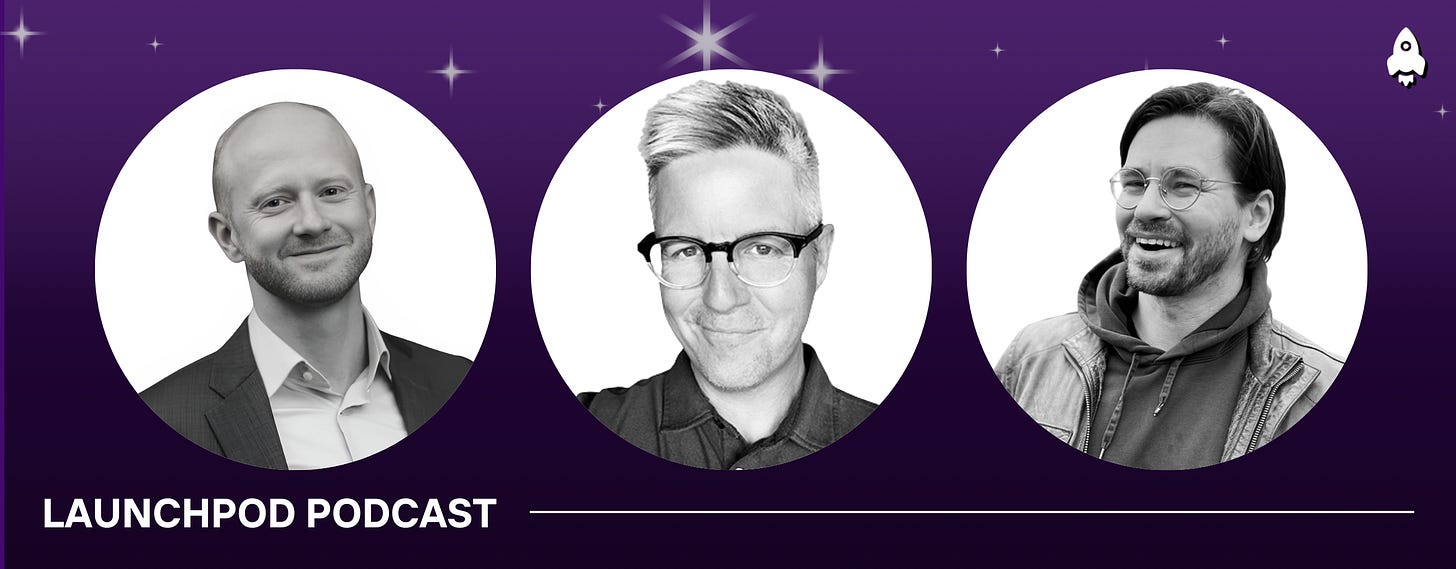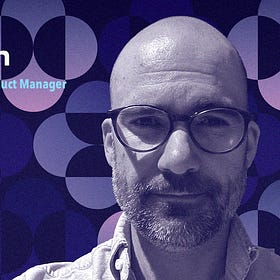Churn, Baby, Churn: Growth and Retention Strategies From Product Leaders
From scaling to multimillion-dollar ARR and user bases of 42 million, to understanding the long-term impact of small churn increases, here are insights from top digital product leaders.
Happy Friday, folks!
It’s almost time to close that last tab, silence your Teams notifications, and get ready for a long weekend (if you’re lucky enough to have Labor Day off like we do).
But before you sign off, don’t miss this week’s top stories, where we’re covering all things growth, including:
How Michael Park scaled from $0 to $25M ARR
The growth playbook that took Charlie Kaplan and Audiomack to 42M users
Why 0.1% churn might be your most expensive problem
As well as some great insights from the product leaders in our Leader Spotlight interview series
Happy strategizing!
- Imane Rharbi
Lessons From Product Leaders On Growth
1. The Hidden Cost of 0.1% Churn | Ken Houseman, VP of Product (Zuora)
Ken’s team at Zuora turned retention into a growth engine by focusing on churn and making payments a true value driver. By reframing payments as crucial to customer experience, they helped businesses increase margins, reduce churn, and unlock faster product development with AI.
Here’s how they did it:
Elevated payments from a billing add-on to a standalone product that simplifies complexity and helps companies expand globally
Used market segmentation to prioritize high-value processors and regional partners, giving customers flexible, low-cost access to new payment methods
Leveraged prototypes built with AI to cut weeks of design and engineering time
Tip for PMs: Start by measuring involuntary churn from failed payments. Even small percentages add up fast! Use AI-driven retries or smarter payment routing to recover revenue, then reinvest those gains into improving customer retention.
2. How to scale $0 to $25M ARR | Michael Park, VP of PM (Buffini & Co)
In this episode, Michael draws on lessons from scaling multiple startups to show how product leaders can balance founder vision, team focus, and sustainable growth. Instead of chasing every new framework, his approach centers on consistency, customer closeness, and avoiding fatigue from “the latest playbook.”
What he did:
Involved engineers directly in roadmap planning to avoid rigid, top-down deadlines and overly chaotic agile cycles, creating ownership and innovation
Focused the team on consistency and solving user problems instead of chasing the latest product fads, reducing burnout and sustaining growth to $25M ARR
Tip for PMs: Don’t get caught up in every new framework. Focus on fundamentals: solve user problems, involve your builders in decisions, and create clarity for your team. Consistency beats intensity.
3. Growing to 42 Million Users: Audiomack's Growth Playbook | Charlie Kaplan, VP of Product (Audiomack)
Charlie’s journey shows the difference between hype vs. real product-market fit. At Cymbal, he drove 50x user growth but learned that signups without stickiness lead to failure. At Audiomack, he applied those lessons, built systematic testing, and leaned into accessibility, scaling the platform to 42 million monthly users!
Here’s how he did it:
Grew Cymbal quickly with press buzz, but discovered churn was high, showing that a social product without a “single-player mode” can’t survive
Joined Audiomack and introduced systematic data tracking and hypothesis-driven testing, turning failed features into new monetization opportunities
Positioned Audiomack as the accessible streaming service for global listeners priced out of $11/month subscriptions, driving adoption in Africa and fueling growth to 42M MAUs and 12M DAUs
Tip for PMs: Don’t confuse hype for fit. Look for repeat usage and retention, not just signups. Build a sticky “single-player mode” first, then expand into network effects.
ICYMI: LaunchPod
In this episode of LaunchPod, we sit down with Joel Polanco, Senior Hardware Product Manager at Intel’s Edge Computing Group, to explore why product leaders need to rethink where their AI models run. From cloud economics to retail automation and hybrid architectures, Joel explains how moving AI to the edge reshapes cost structures, customer experience, and product strategy.
In this episode, we discuss:
Why companies start in the cloud but shift to the edge once usage and costs scale (03:00)
How retailers are using conversational agents and inventory automation to optimize workflows (04:00)
Why latency, privacy, and security make edge deployments essential for customer trust (09:00)
Leader Spotlight Roundup
Leader Spotlight: Applying a philosopher’s mindset to product with Michael Thornton
Michael Thornton is Director, Principal Product Manager at Merck & Co., where he helps teams develop the tools to make cutting-edge therapeutics. He began his career in food systems, managing farmers' markets and working as a cheesemonger, before transitioning into tech via a product internship at a fintech startup that was later acquired by MasterCard.…
In this interview, Michael Thornton spoke about:
How he applies lessons from a background in neuroscience and therapeutics to show how PMs with a scientific or engineering background can transfer technical skills into product roles
Why AI is a tool that generates plausible but not perfect answers, making human critical thinking essential in product workflows
The importance of hiring for durable skills, prioritizing empathy, curiosity, communication, and critical thinking, skills that last longer and create stronger teams
Read more Leader Spotlights
🔥Hot🔥 discussions in PM this week
Is this AI wave like the dot-com bubble?
In this thread, PMs argue whether AI is a bubble or the next “cloud,” widely adopted and increasingly costly, and something PMs should plan around as expenses rise.
How do you handle delays? Are they really inevitable to some extent, or am I doing something wrong?
Why do product delays happen? And how do you turn these setbacks into growth?
Daily standups, dashboards, stakeholder meetings, and unpredictable chaos. Here’s a snapshot of what these PMs’ days look like.
Writing user stories is daunting for me, and I see a lot of variations. Don't know what to follow
Writing user stories can be overwhelming. Here’s what PMs have to say about finding a clear and effective approach (and which questions to ask!).
What does LogRocket do?
LogRocket's Galileo AI watches user sessions for you and surfaces the technical and usability issues holding back your web and mobile apps. Understand where your users are struggling by trying it for free at LogRocket.com.






